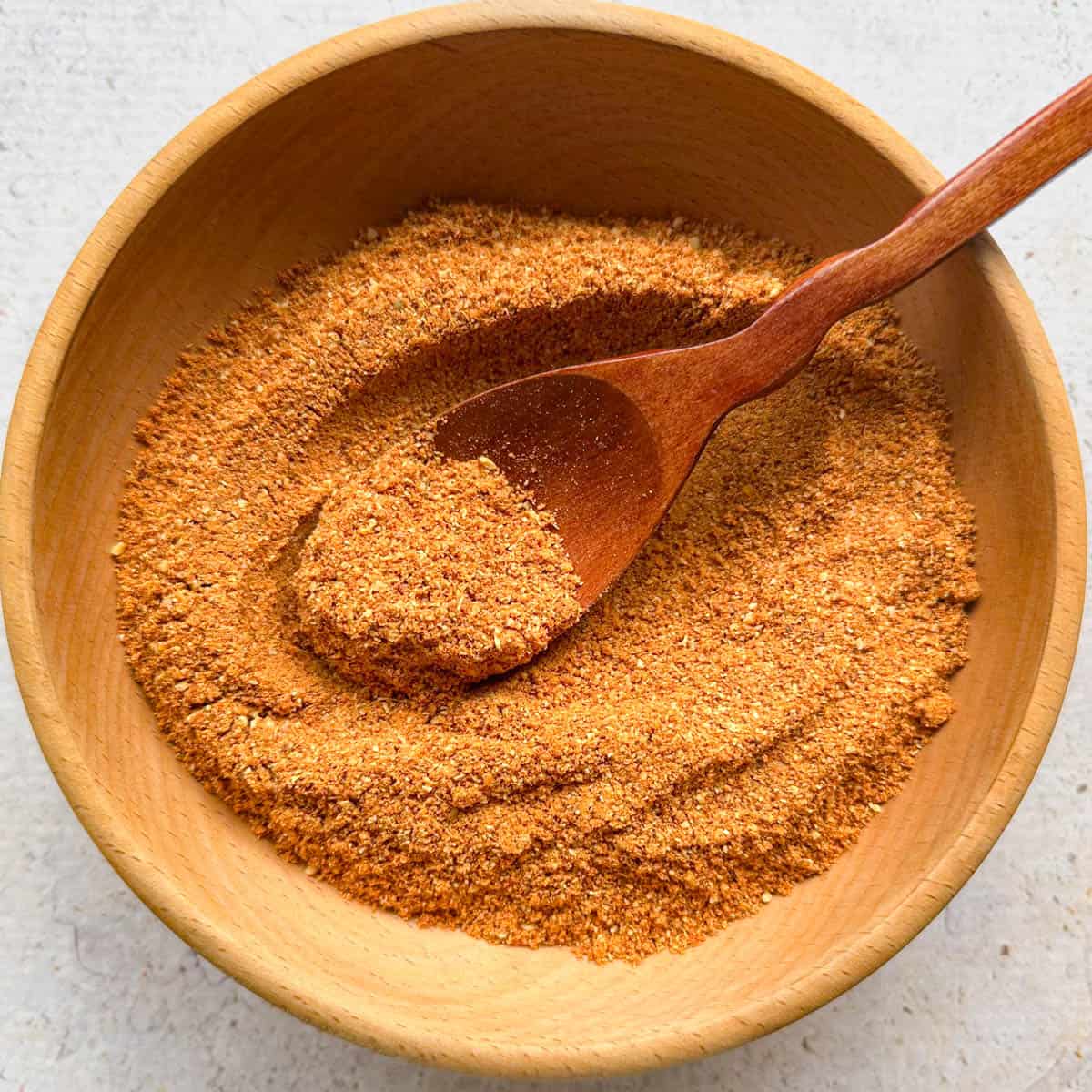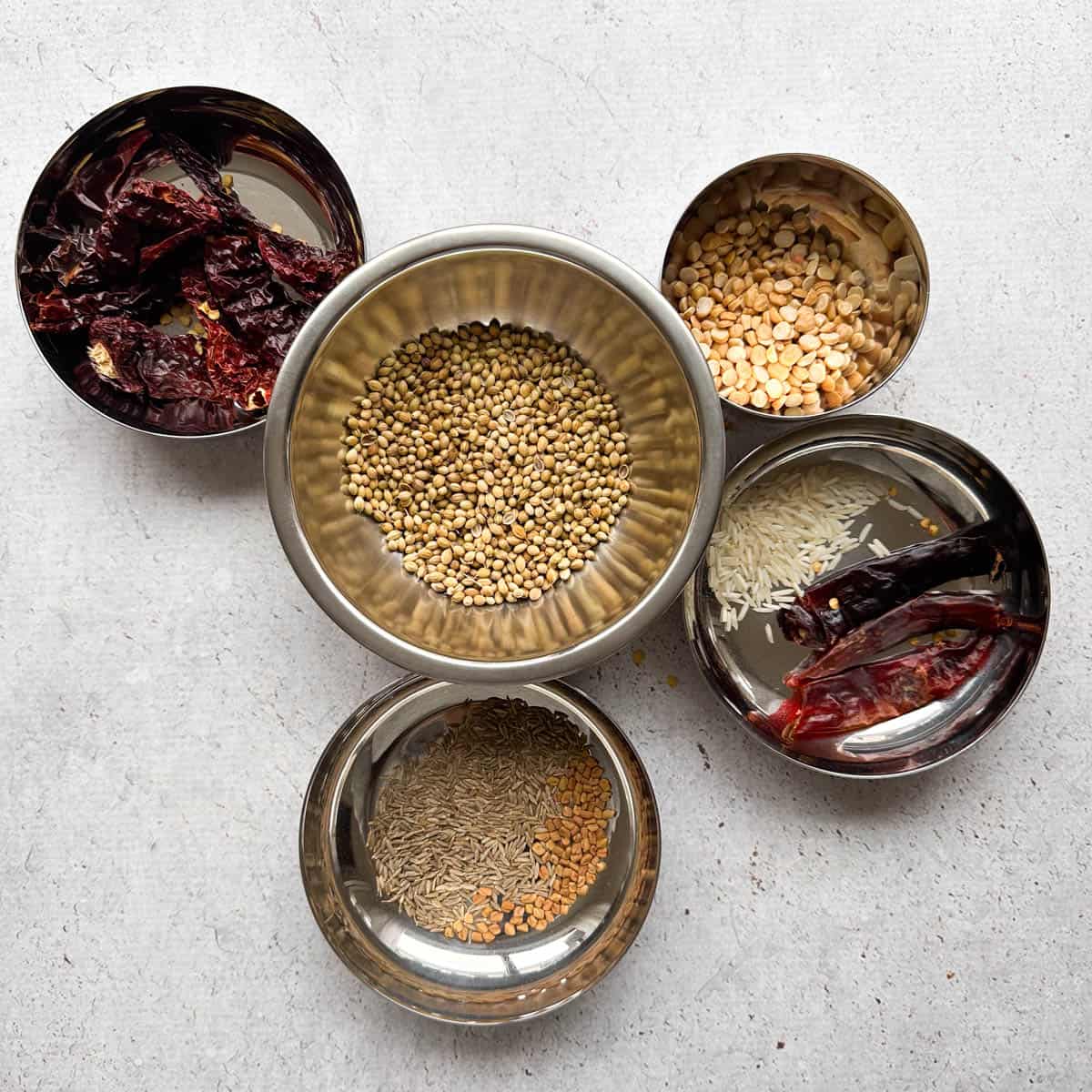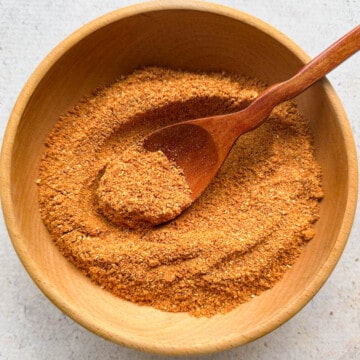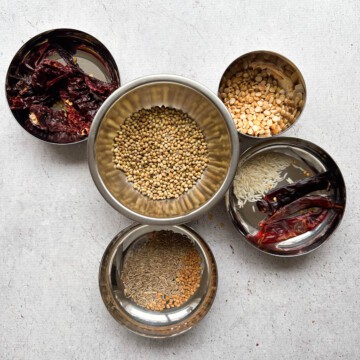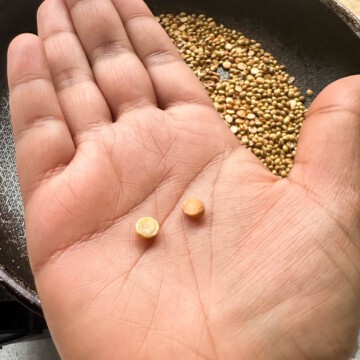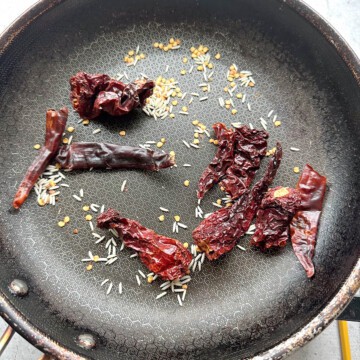Purpose of each ingredient in sambar powder
Here are a list of the ingredients in the sambar powder. It is important to understand what each of these ingredients bring to the table so you can adjust the podi to your liking. Start with the base recipe provided below but tweak the ratios based on your taste.
Coriander Seeds - Add earthy and robust taste but also are important to give body to the sambar. Chana Dal - Adds a nutty taste and helps thicken the sambar. The closest substitute is toor dal. In a pinch, you can substitute masoor dal as well. Raw Rice - Helps thicken and give the sambar a silky texture. Whole Dried Thai Red Chilis - Add a fiery heat to the sambar. Reduce this if you like a milder flavor. Whole Dried Kashmiri Chilis - Add a subtle heat but also a vibrant color to the sambar powder. Cumin Seeds - Add a nutty and earthy flavor. Fenugreek Seeds (Methi Seeds) - Add bitterness to the sambar podi.
Tips on toasting sambar spices
Toasting your spices is crucial to making a delicious sambar podi. When whole spices are toasted, they release their aromatic oils and make their flavors more pronounced. Skipping this step will yield a spice blend that is dull and will not utilize the potential of the spices’ flavors.
Individually toast spices. It is very important to toast spices individually because thicker spices like coriander seeds and chana dal take a longer time to fully toast while the thinner spices like cumin seeds toast fairly quickly. Rely on senses rather than the strict timings listed in the recipe. Indicators that the spices are done toasting are when you can smell their aromatic scent, when you can see them brown, or when you can hear them popping in the pan. The timings are more of a rough estimate and can vary depending on the type of pan used and the temperature settings of your stove. Toast spices on medium heat. Toasting the spices at any higher heat can cause them to burn. When toasting spices for spice blends, dry toast the spices. Dry toasting means that the spices are simply toasted on the pan with no added oils or fats. Constantly move spices around to ensure browning on all sides. If spices burn, start over, or else the sambar powder will have a bitter and burned final taste. The fresher the spices, the better the final powder. Try to source spices that have a harvest date on them so you know how fresh they are.
Tips on grinding sambar powder
Allow spices to cool before grinding. Skipping this step can cause steam in the spice grinder which can sometimes pop off the lid or cause condensation in the spice blend. Condensation drastically reduces the shelf life of the sambar powder. Don’t overstuff the spice grinder; instead, grind spices in batches. Do not smell or sniff the freshly ground spices when you open the spice grinder. This spice blend has chilis, and the chilis when freshly ground are potent and can cause irritation in the nose and eyes. Tap the spice grinder lid to push the spices into the grinder when opening it, to prevent powder from flying around and being wasted. If you are using a mortar and pestle to grind the sambar powder, take care to grind the spices in small batches to get as fine of a powder as possible. Make sure to use a series of smash motions (up/down) as well as rotating circular motions to really help break down the spices.
Shelf life and storage tips
It is best to allow the sambar powder to fully cool before storing it away. Store in a cool, dark, airtight container for the longest shelf life. Sambar podi is most flavorful within six months of grinding.
